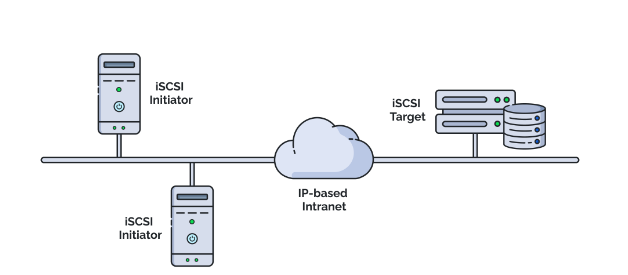How to Install and Use Kind on Linux

How to Install and Use Kind on Linux
Introduction to Kind
Kind (Kubernetes IN Docker) is a tool for running local Kubernetes clusters using Docker container nodes. It is particularly useful for developers looking to test Kubernetes applications in a controlled environment. By creating lightweight clusters, Kind allows for rapid development and testing of Kubernetes-based applications without the overhead of managing full-fledged clusters. In this guide, we will walk through the installation of Kind on a Linux machine and provide an overview of its basic usage.
Prerequisites
Before installing Kind, ensure your system meets the following requirements:
A Linux distribution (e.g., Ubuntu, CentOS, Fedora).
Docker installed and running. You can verify if Docker is installed by running docker –version in your terminal.
Basic command-line knowledge.
If you do not have Docker installed, you can follow these commands to set it up:
sudo apt update
sudo apt install docker.io -y
sudo systemctl start docker
sudo systemctl enable docker
After installation, you may want to run Docker commands without sudo. To do this, add your user to the Docker group:
sudo usermod -aG docker $USER
After running this command, log out and log back in to apply the group changes.
Step 1: Install Kind
To install Kind, you can use a script that automatically downloads and installs it, or you can manually download the binary. Here’s how to do both:
Method 1: Install via Script
Run the following command in your terminal to download and install Kind:
curl -Lo ./kind https://kind.sigs.k8s.io/dl/latest/kind-linux-amd64
chmod +x ./kind
sudo mv ./kind /usr/local/bin/kind
Method 2: Install via Binary Download
Alternatively, you can download the binary manually. First, navigate to the Kind releases page on GitHub at Kind Releases and find the latest release. Use the following command to download it:
wget https://kind.sigs.k8s.io/dl/latest/kind-linux-amd64
chmod +x kind-linux-amd64
sudo mv kind-linux-amd64 /usr/local/bin/kind
After installing Kind, you can verify the installation by checking the version:
kind version
Step 2: Creating a Kubernetes Cluster with Kind
Once Kind is installed, creating a Kubernetes cluster is straightforward. Run the following command to create a cluster:
kind create cluster
This command sets up a local Kubernetes cluster using Docker containers. The output will show the progress of the cluster creation, and it may take a few moments to complete.
You can also customize the cluster creation process by providing a configuration file. Create a file called kind-config.yaml and specify the desired configurations. Here’s an example:
kind: Cluster
apiVersion: kind.x-k8s.io/v1alpha4
networking:
disableDefaultCNI: true
kubeProxyMode: ipvs
To create a cluster using this configuration, run:
kind create cluster –config kind-config.yaml
Step 3: Interacting with Your Kind Cluster
After your cluster is created, you can interact with it using kubectl, the command-line tool for managing Kubernetes clusters. If you don’t have kubectl installed, you can install it with the following command:
sudo apt install kubectl -y
Once kubectl is installed, you can check the cluster status:
kubectl cluster-info
This command will provide information about your cluster, including the API server endpoint and DNS details. You can also list the nodes in your Kind cluster:
kubectl get nodes
Step 4: Deploying Applications
Now that your cluster is up and running, you can deploy applications to it. Here’s a simple example of deploying an Nginx server:
Create a deployment using the following command:
kubectl create deployment nginx –image=nginx
Expose the Nginx deployment to access it from outside the cluster:
kubectl expose deployment nginx –port=80 –type=NodePort
Get the service details to find out how to access your Nginx server:
kubectl get services
The output will display the port mappings, allowing you to access your Nginx server using your machine’s IP address and the assigned NodePort.
Step 5: Deleting the Cluster
When you are finished with your testing and development, you can delete the cluster to free up resources:
kind delete cluster
This command will remove the entire Kind cluster, including all associated resources.
Troubleshooting Tips
Docker Issues: If you encounter issues related to Docker, ensure that the Docker service is running and that you have the correct permissions.
Network Configuration: Sometimes, network configurations may prevent Kind from creating clusters properly. Ensure your firewall or network settings allow Docker containers to communicate.
Advanced Configuration
For advanced users, Kind allows additional configurations, such as using different container runtimes or specifying network settings. Refer to the official Kind documentation for more details on these advanced features: Kind Documentation.
With this guide, you should now be able to successfully install and use Kind on your Linux machine, facilitating local Kubernetes cluster management and application deployment.
Thank you for reading our article. If you would like to read our articles about Linux systems and eksctl , you can take a look at the link below 🙂
How to Install eksctl CLI Tool on Ubuntu Linux
If you want to improve yourself in servers, you can try it by purchasing a suitable and reliable server from our site. I wish you good luck 🙂





